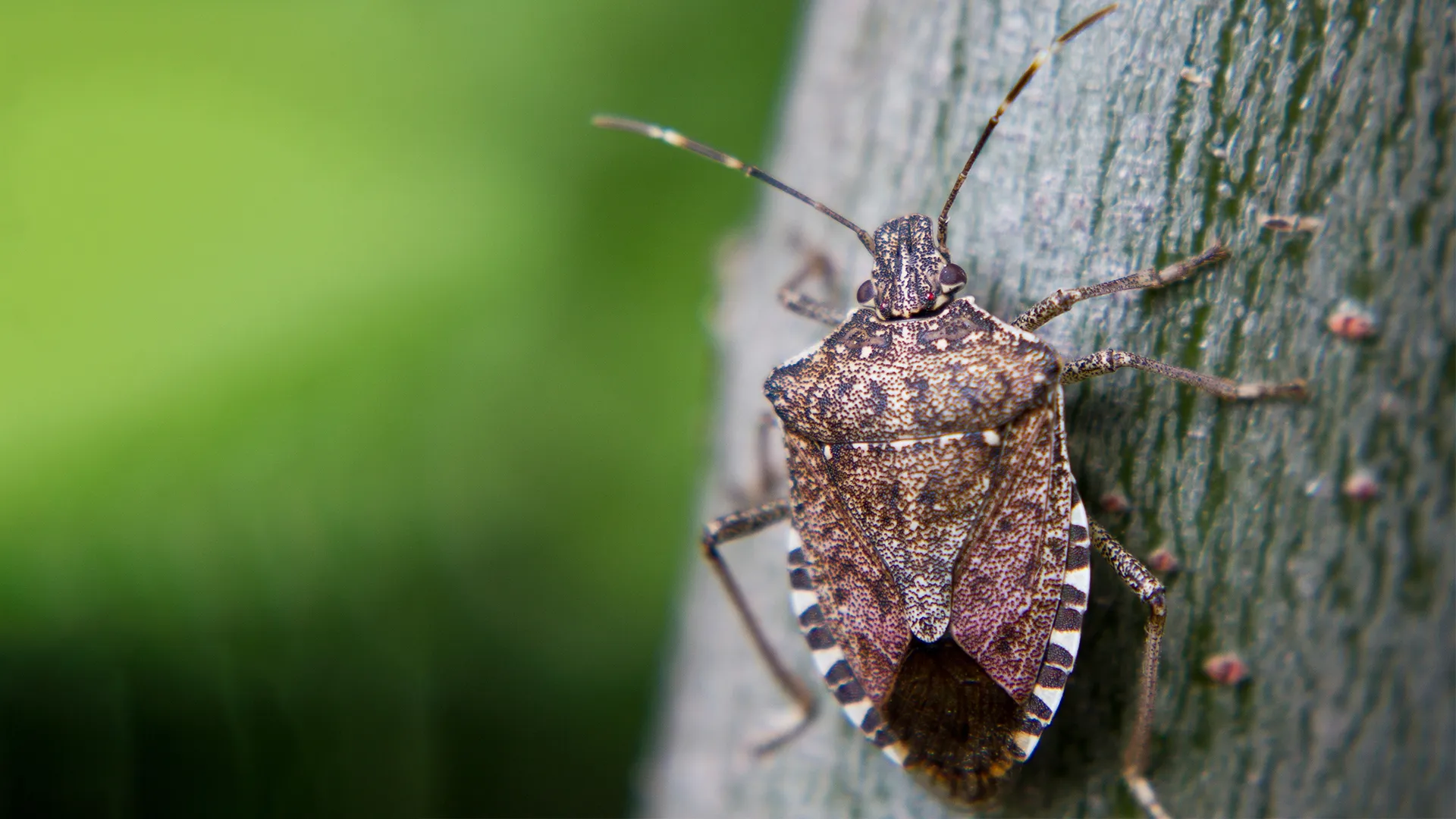It seems harmless, right? Just a bigger than average insect. Wrong! If you see this bug in your garden, you need to take these steps immediately. Or else, you might have a big problem on your hands. This is the stink bug, and it’s turned out to be a rather problematic species.
Halyomorpha Halys
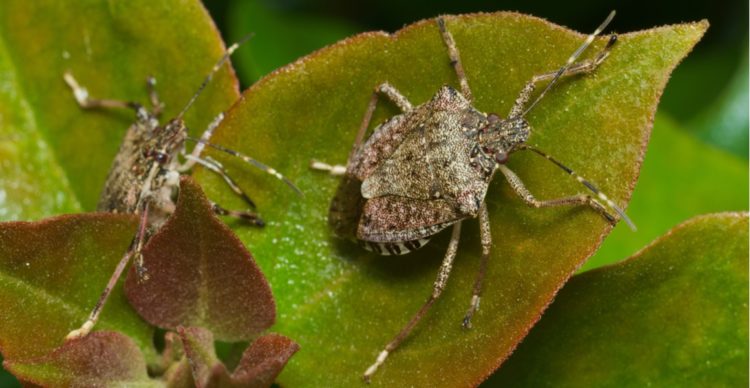
It can be a little hard to spot a lot of different kinds of insects. They’re mostly designed for camouflage, matching the wood of trees and the green of leaves. And it’s that skill at camouflage that makes it incredibly important to keep your eyes peeled for these sneaky critters. This species of insect is called Halyomorpha halys, more commonly known as the brown marmorated stink bug. Not a very glamorous name, which makes it all the more fitting for a species such as this.
Big, Brown, And Hard To Spot
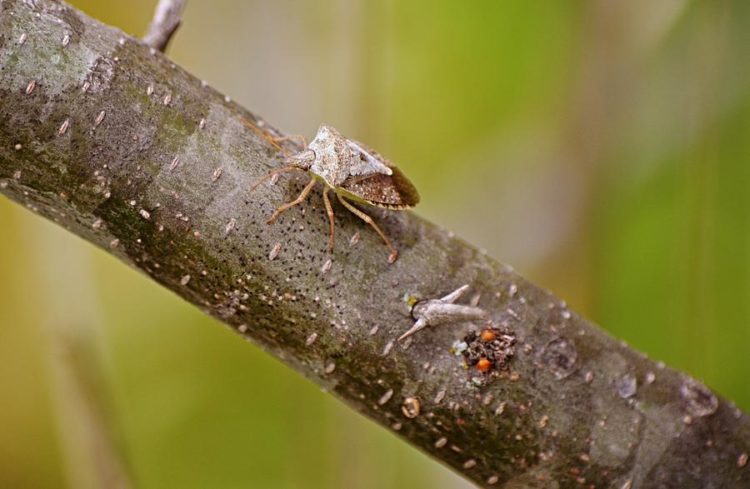
Experts urge people to keep a look out for these when they’re outside. They could be moving around in your backyard. They’re six-legged, like all insects, with a body that looks similar to a shield. It’s unique, but still tricky to spot. The texture of its body really helps it blend in on trees. Fully grown, they’re only 0.7 inches long, but dangerous things can come in small packages.
Wreaking Havoc
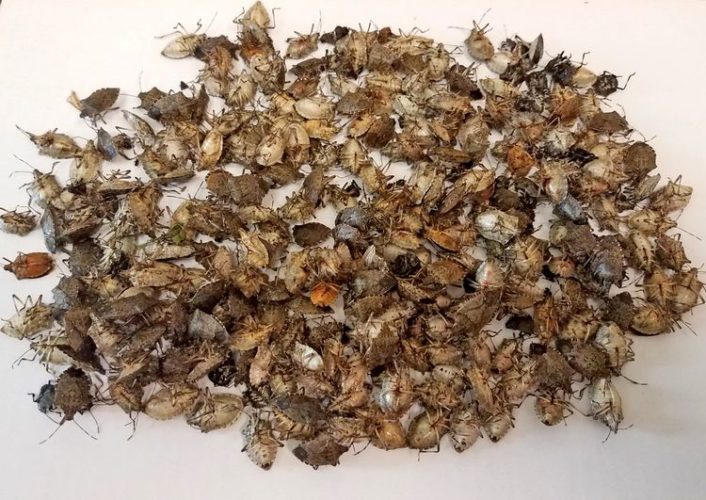
If unchecked, these creatures can wreck absolute havoc on your home and garden. And that’s why remaining vigilant is all the more important. They’re winged cretans that can get into the most unlikely of places. Even your house.
Getting Indoors
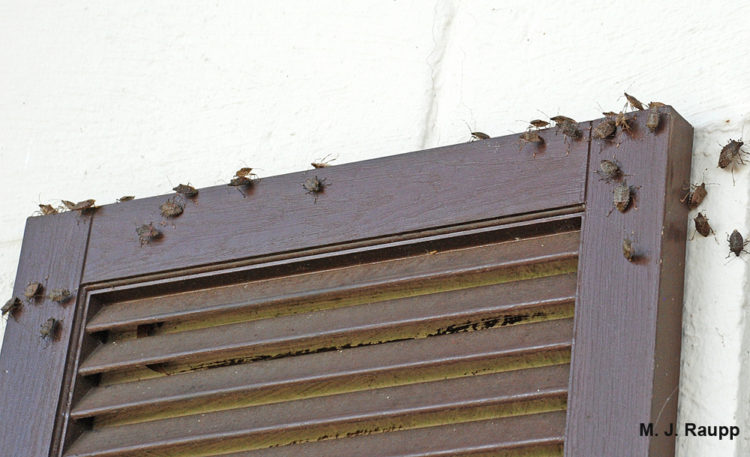
It doesn’t matter how, these insects can find a way into your house if they’re given the chance. Staying vigilant is important enough, but actually doing something is the next step. To keep them out of the house and to stop them from destroying your garden. Once the garden’s gone, they might feel as though it’s their duty to move into your home.
An Invasive Species
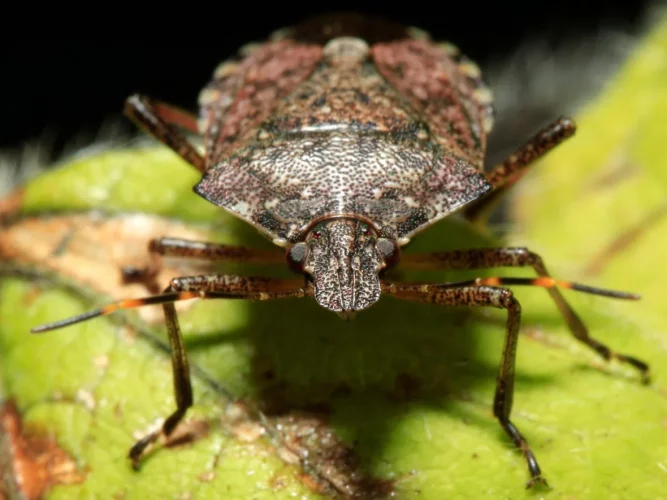
This species of stink bug actually originated in Asia. It was primarily found in Korea, China, and Japan. However, in 1998, it was sighted in Allentown, Pennsylvania. Scientists came to the conclusion that it had accidentally been brought over to the US at some point. And it didn’t take long for the stink bug to become a pest species in the Eastern United States. And that’s how they first became an invasive species.
Max Barclay

One scientist began backtracking the origins of the stink bug though. It just seemed a little crazy how it could travel across multiple countries. The head of Coleoptera collection at the National History Museum, Max Barclay, was the one that began deciphering it. He was able to look back to earlier sightings of the insect in the United Kingdom.
A Prediction
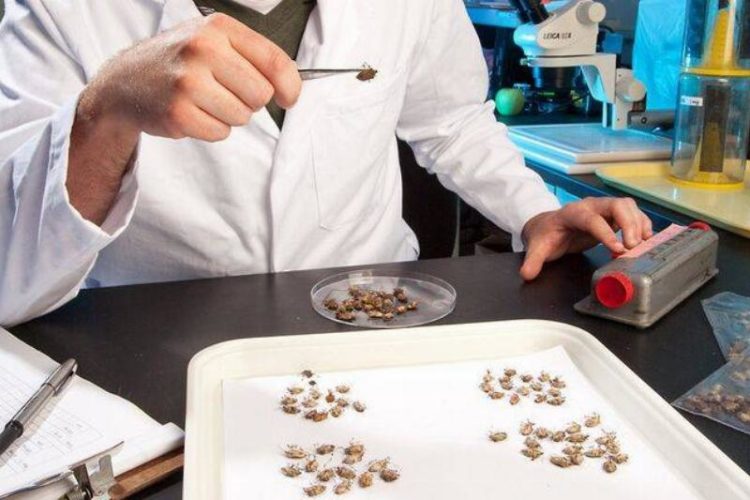
Barclay actually predicted in 2014 that the stink bug making its way from the East to the UK was “only a matter of time”. He wasn’t wrong. The first stink bug was spotted in the gardens of the Natural History, itself, in 2020.
Traveling Through The Mail
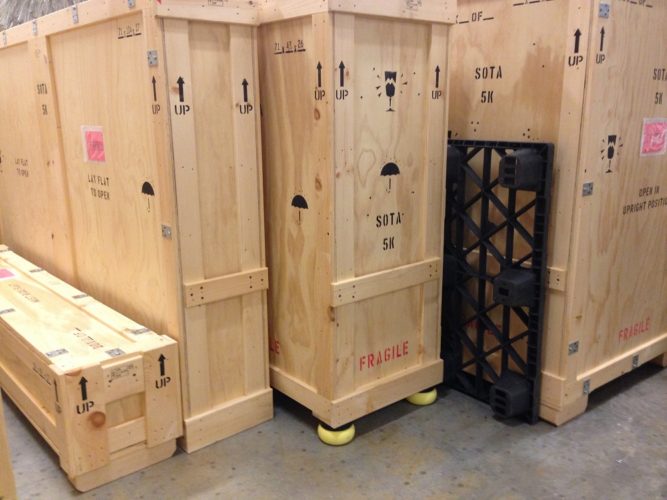
And just as the stink bugs arrived, they wouldn’t leave. According to Barclay, they moved indoors to hibernate during the winter. And some of these indoor spots included shipping crates, pallets, and other packaging used as a part of global trade. They essentially snuck in using the mail system.
Diapause
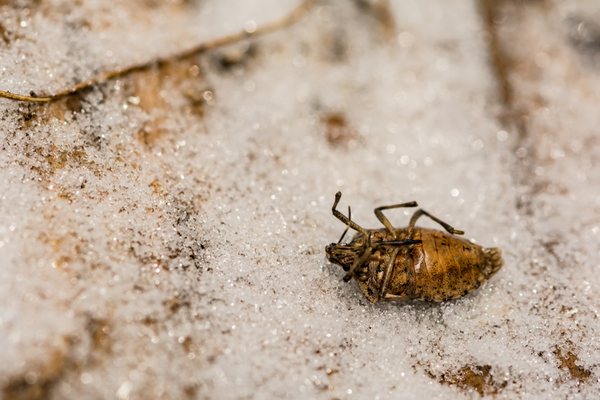
The stink bug just doesn’t fair well in colder climates. Sleeping through the colder months is something called “diapause”, a hibernation for these insects. And when the winter months were over, they awoke in full force. They don’t just prefer warm weather, but thrive in it.
Climate Change

With climate occurring, the Earth is only getting warmer and warmer as the years pass by. And because of that, the stink bug population has been thriving. The International Journal of Biometeorology had predicted that, but the 2010s, the stink bugs would find their way to Switzerland. And boy did they.
Invading Switzerland

According to the journal, “In Switzerland, crop damage and increasing populations have been observed since 2017 and related to increasing temperatures.” One of the specialists that worked on the paper, Dr. Tim Haye, was also an expert on stink bugs and their relation to the climate. He works for the Centre for Agriculture and Biosciences International, so he’s learned a thing or two about invasive insects. And in the paper he wrote, “There is strong evidence that climate change is already modifying species. It is evident that the number of non-native species will increase and that climate change will promote their establishment. The north-western part of Switzerland could become completely suitable for H. halys.”
They’re Even In The Alps!

Dr. Haye went on to explain where he believed the stink bugs would infest Switzerland. He even projects their range could go as far as the foothills of the Alps. He theorized that if the climate kept changing, then the stink bugs could even invade the Alps themselves! They’re already bothersome in how far they can spread, but infestations can just get massive!
Infesting The US
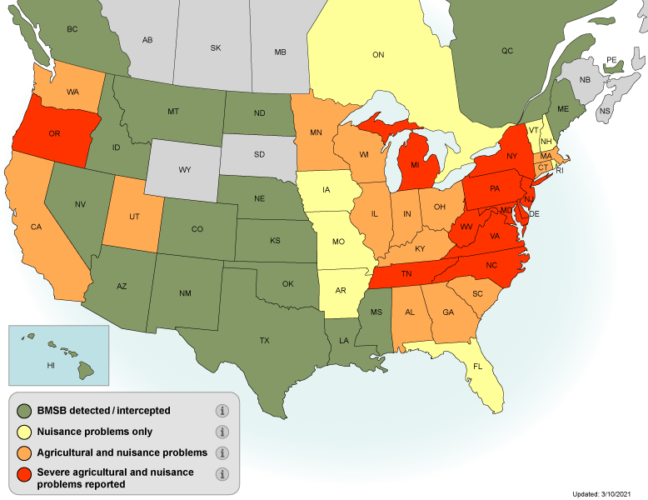
While these stink bugs made their way into the US in 1998, they spread incredibly quickly. They quickly spread from Pennsylvania to New Jersey. And by 2004 they were even in Virginia. They haven’t been just limited to the Eastern seaboard either. Currently, 44 out of 50 states in the US are infested with stink bugs. And it only took 25 years for it to happen.
The Reason Behind Their Name

Of course, them just acting as pests species is bad enough. They also smell terrible. The smell has been compared to cilantro or almonds. Regardless, it’s not a smell people are keen on taking in.
They Love Fruits And Vegetables
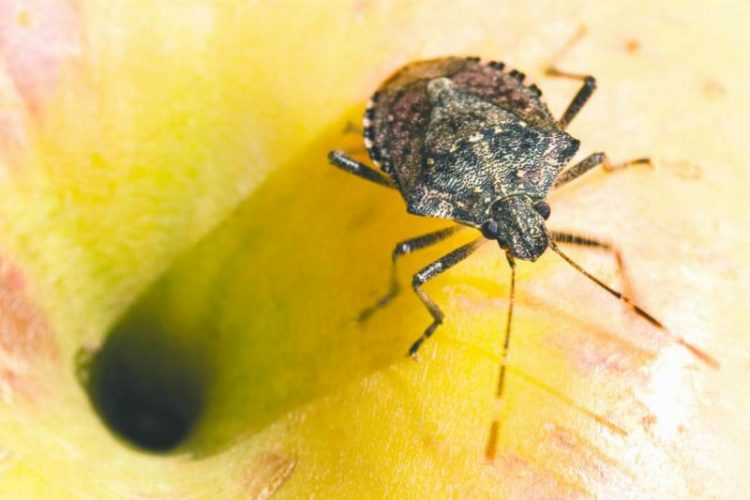
Of course, it’s not just because of their smell that stink bugs are such big pests. They love eating fruits and vegetables, with apples particularly being a delicacy. In 2010 alone, farmers lost $40 million worth of apples just because they didn’t catch the infestation in time.
An Invasion That Never Ends
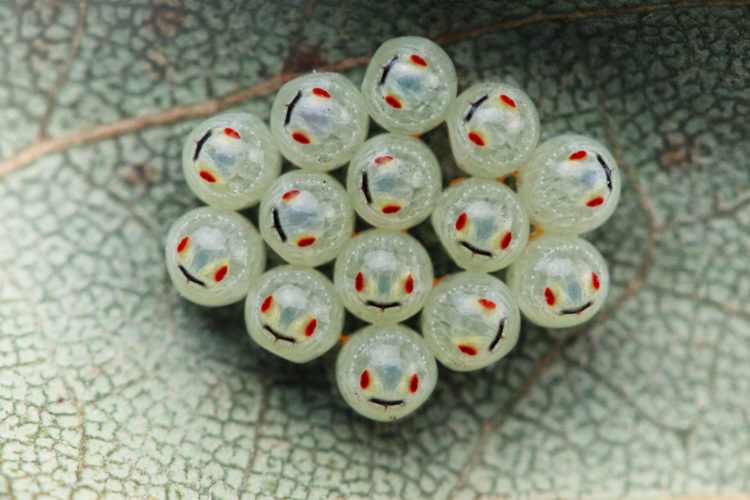
And the worst part is that it’s almost impossible to simply wipe out this species from the country. As an invasive species, they establish themselves fairly quickly and have proceeded to thrive in their new environment. Similar things have happened with other species as well, such as when the harlequin ladybird moved from China to the UK in 2006. They multiplied incredibly quickly.
Containment
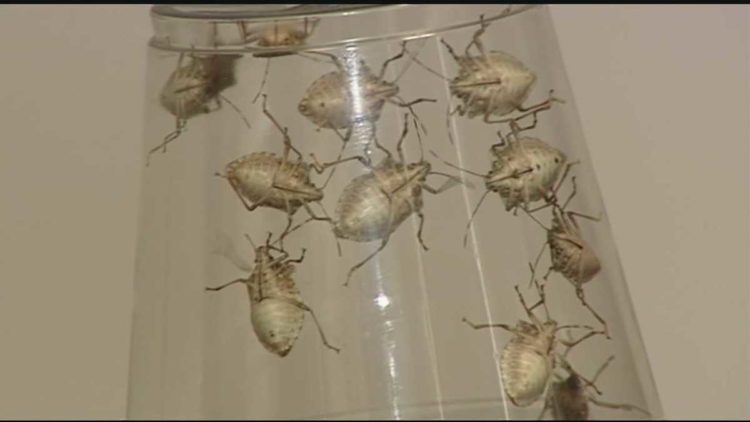
There is no long-term solution to simply eradicate the stink bugs, but there is something you can do to at least keep them away from your house and backyard. So make sure to keep the following tips in mind.
Remove Weeds And Other Obstructions
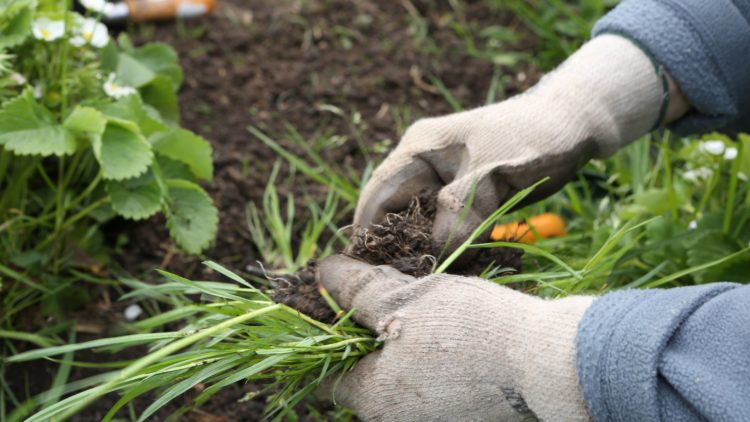
The simplest thing to do is just remove weeds. It was something you probably would already do to keep your garden in good shape. But as an added bonus, you’re removing hiding places that stink bugs like to stay in. However, it would probably also be a good idea to get rid of lawn ornaments as well, just to get rid of any other obstructions.
Make A Homemade Repellent
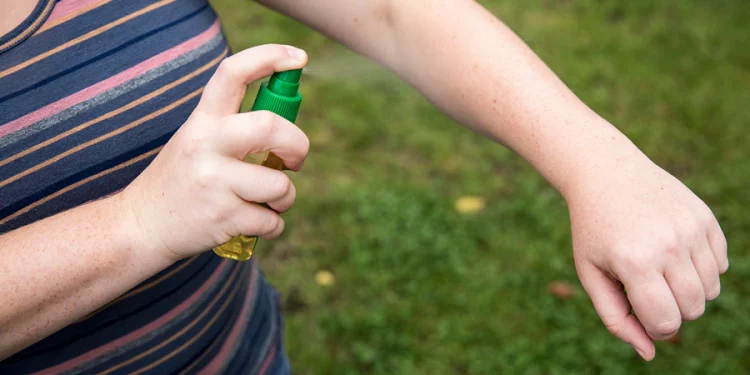
Next you make a repellent. You can make a something at by mixing kaolin clay solution, also known as mineral clay, 15 milliliters of dish soap, and a couple gallons of water. Just mix it in a spray bottle. They won’t eat, or even step foot on leaves sprayed with the mixture. And it should be harmless to your plants. Just make sure to wash any fruits or vegetables to spray before you eat them.
Use A “Trap Plant” To Route The Stink Bugs

You can also use a “trap plant” to attract the stink bugs. Stink bugs actually are attracted to any yellow flower. Plant them in a different section of your yard and just wait. Eventually, the stink bugs will begin to congregate away from the garden. AAnd then, you can decide how you want to get rid of them.
Now Dispose Of The Trap Plant
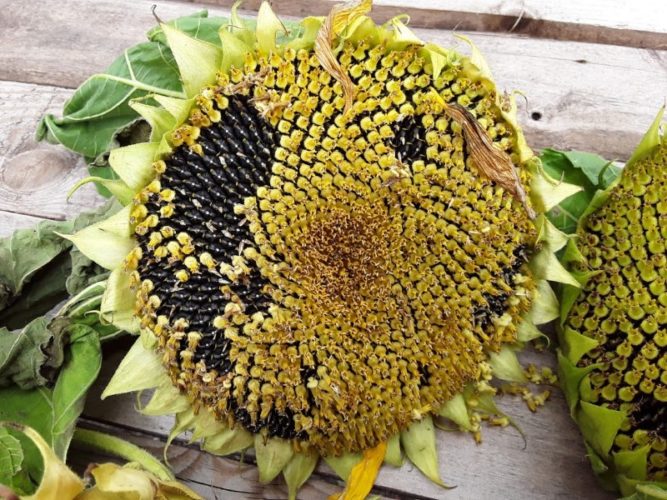
You’ll have a few options for disposing the trap plant, and therefore the stink bugs. You could let nature take its course, allowing birds and other animals to eat the stink bugs. Or you could wait until many stink bugs find the trap plant. At which point, put the plant in a plastic garbage bag and leave it out in the sun. The heal will kill the trapped bugs in a few days.
Keep Them Out Of Your Hose With Sealants
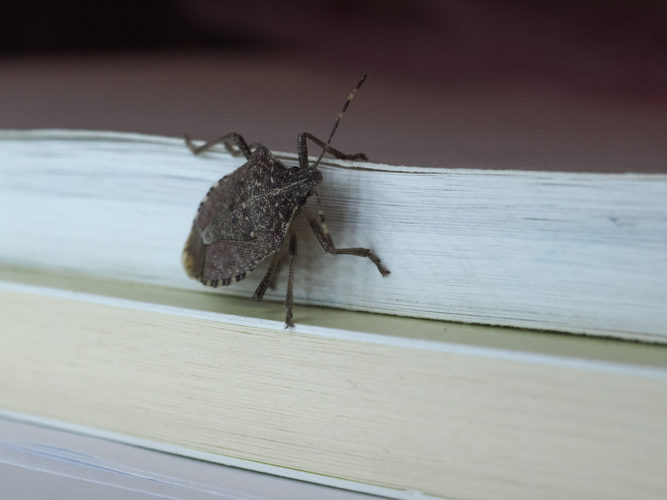
For protecting your house from potential invasion, make sure to get sealants. With a reliable sealant, patch up every possible opening to keep them out. That way they can’t infest your home in the winter time.
When All Else Fails Use A Vacuum Cleaner

And if they do manage to get inside your house, you probably have a household appliance that will work as a last resort. Just grab your vacuum cleaner and suck ’em right up. Then all you have to do is toss the vacuum bag as soon as possible so the smell won’t linger.
Keep An Eye Out For This Insect
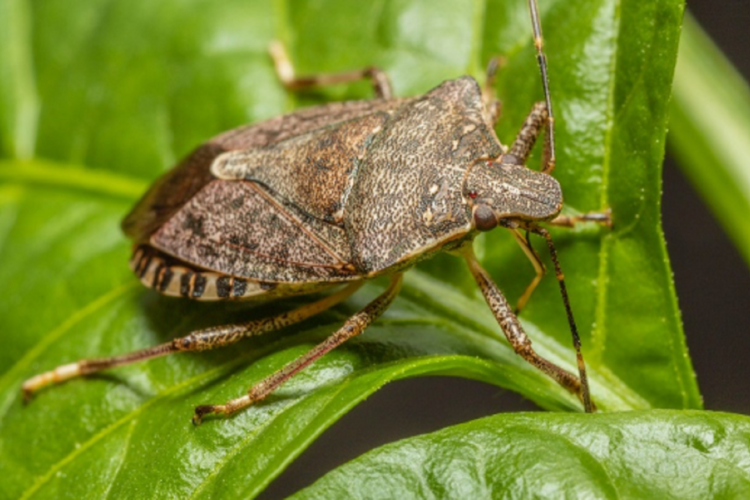
There’s a lot of different things you can do to handle or prevent a stink bug invasion. But just remember, keep an eye out for this annoying bugs. Or else you might be smelling cilantro in your house 24/7.
The Brown Marmorated Stink Bug
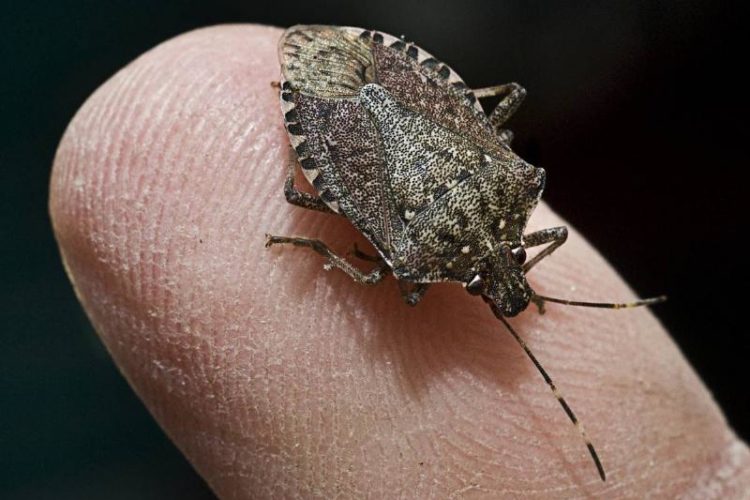
They’re unpleasant to look at and unpleasant to live with. After all, all they want to do is infest your garden and home and multiply.
Sponsored Content

